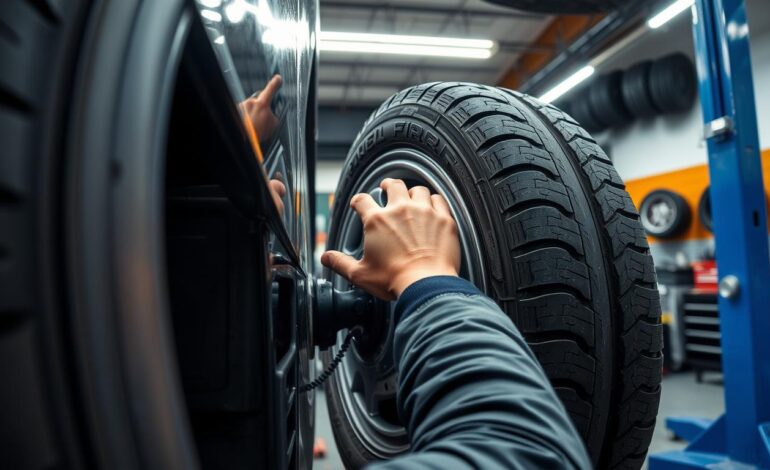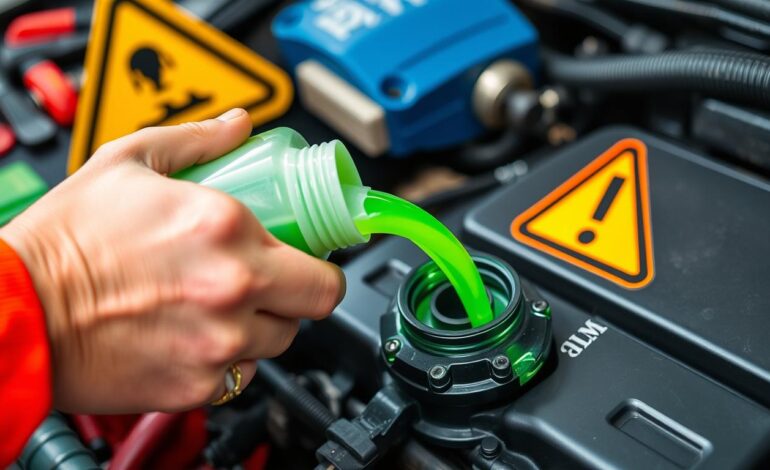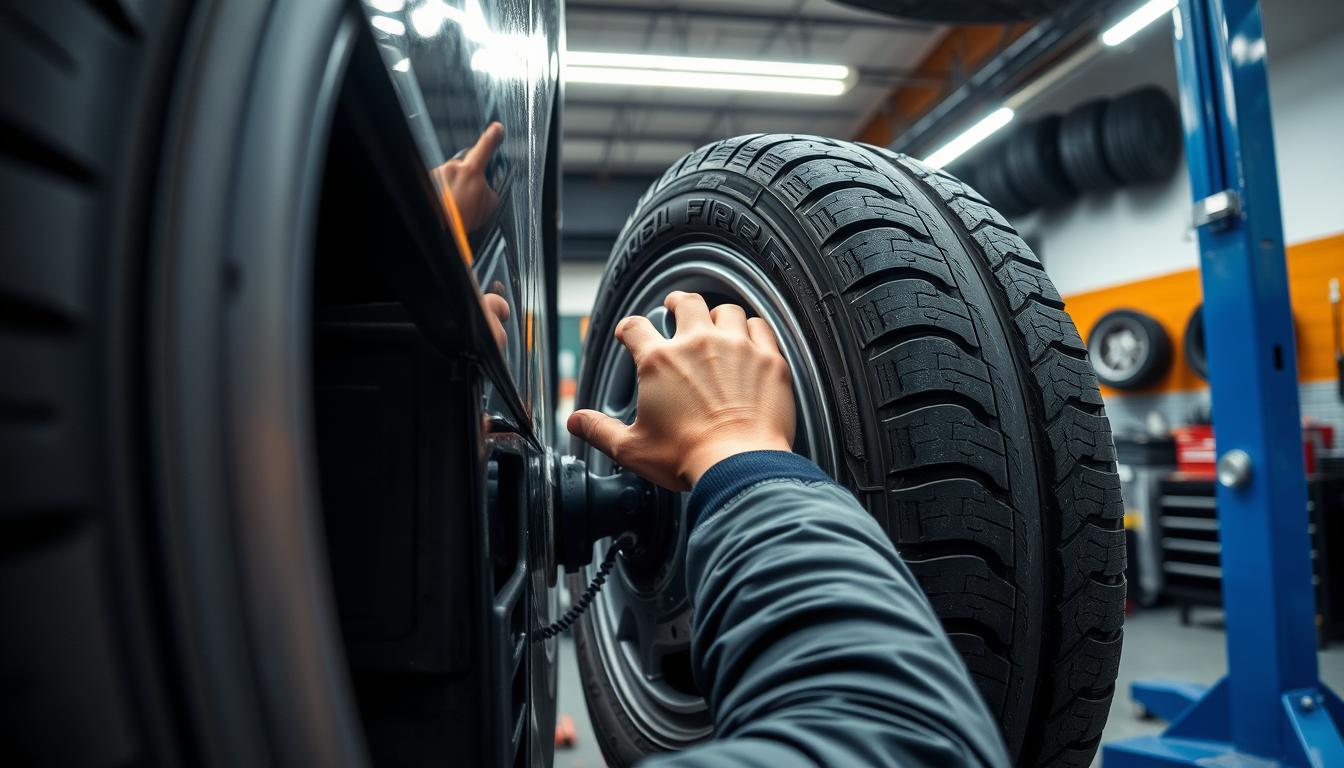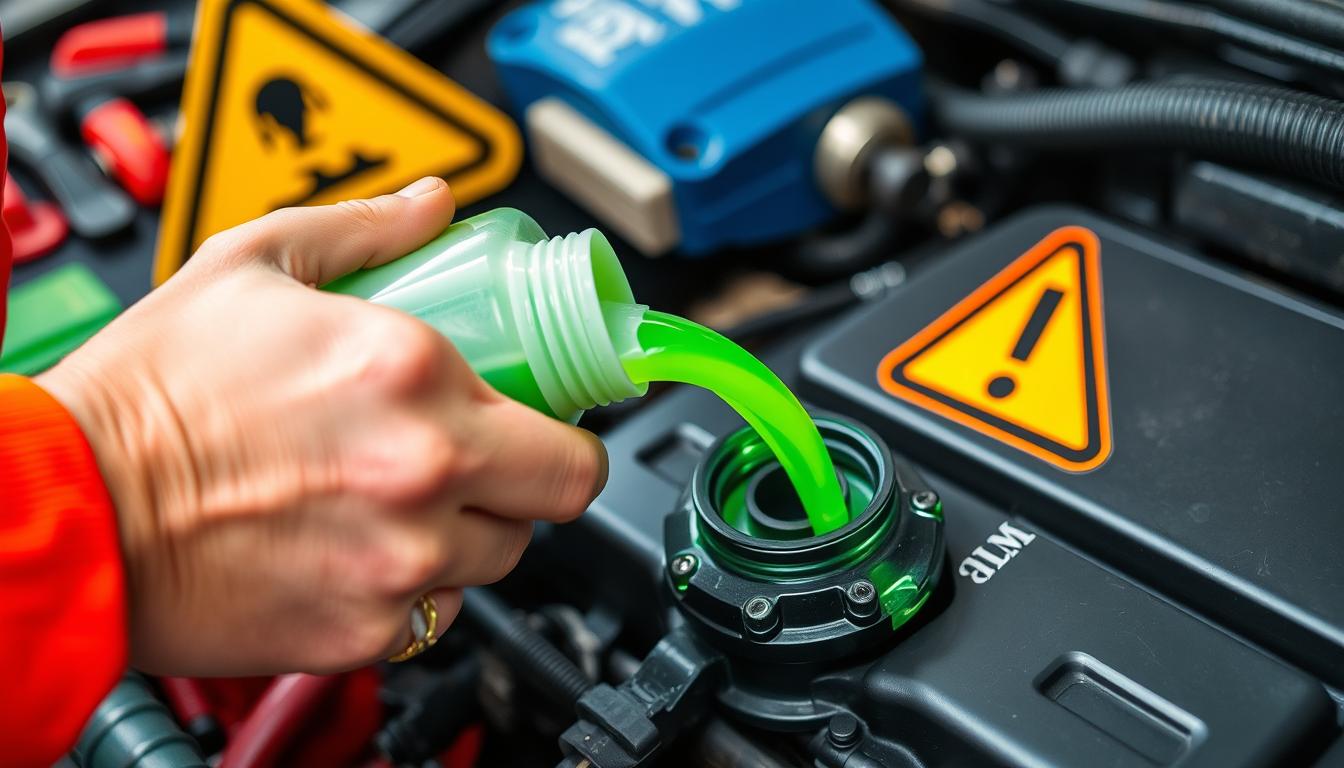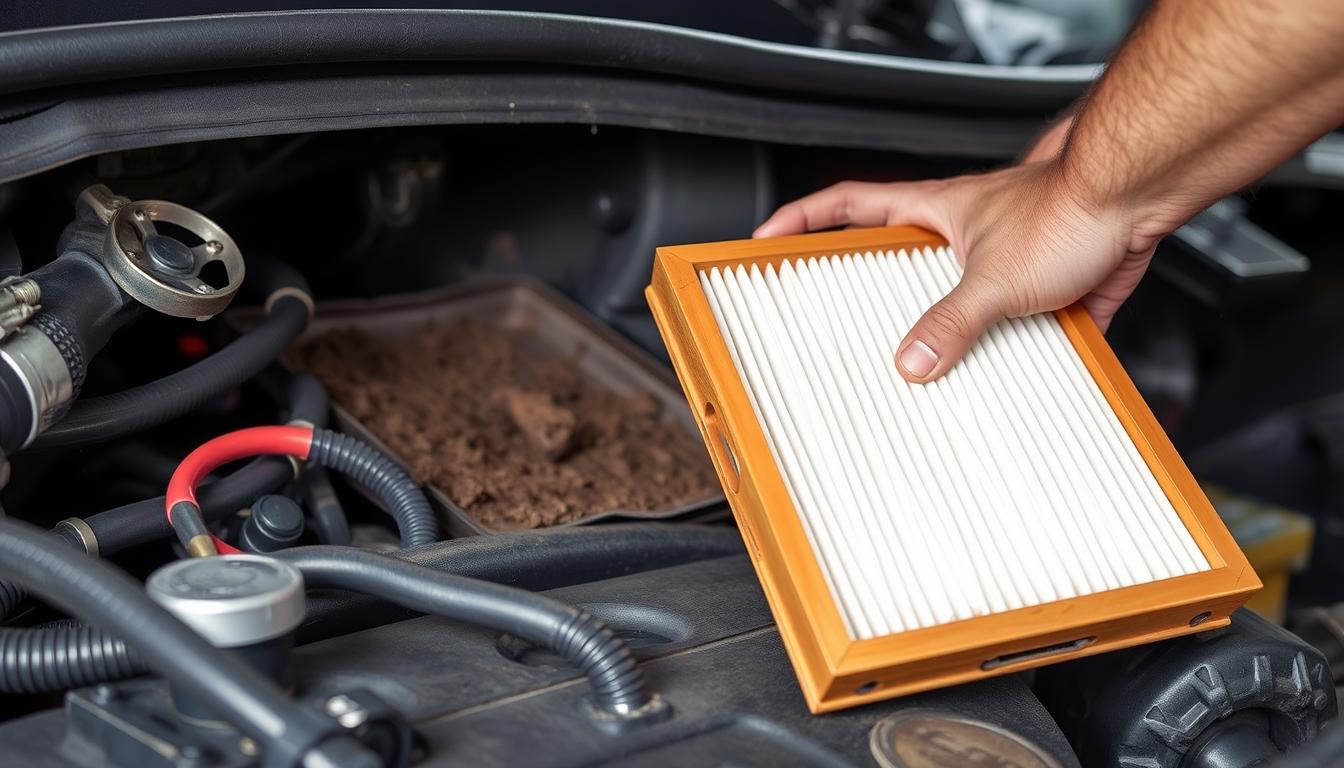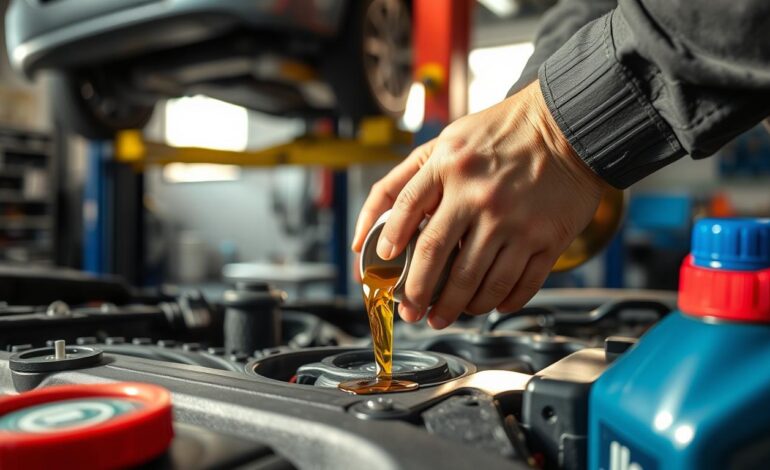
How to Check and Change Your Cars Oil in 30 Minutes
Regular Oil Change is key for car maintenance. It keeps your vehicle running longer. With the right tools and knowledge, you can change your car’s oil yourself. This saves you time and money. We’ll show you how to do it in just 30 minutes.
Doing regular car maintenance like Oil Change stops engine damage. It also makes your car run better. By doing it yourself, you make sure it’s done right and fast.
Key Takeaways
- Regular Oil Change is essential for car maintenance.
- You can perform an Oil Change yourself with the right tools and knowledge.
- Oil Change helps extend the life of your vehicle.
- Regular car maintenance can help prevent engine damage.
- Doing it yourself can save you time and money.
Why Regular Oil Changes Matter for Your Car’s Health
Regular oil changes are key to keeping your car in top shape. Oil is essential for lubricating the engine, cutting down on friction, and stopping it from overheating. By following some easy tips, you can make sure your car runs well and efficiently.
Doing an oil change yourself can save you money and is quite simple. First, you need to get the right tools and follow a few basic steps. Here are some important things to remember:
- Check your car’s manual for the right oil type and how often to change it
- Gather the needed tools, like a socket wrench and oil filter wrench
- Drain the old oil and replace the oil filter
- Put in new oil for the engine
By following these tips and doing a DIY oil change, you can save money and keep your car running smoothly. Always check your car’s manual for specific instructions and guidelines.
Essential Tools and Materials for an Oil Change
For car maintenance, the right tools and materials are key for a good oil change. Before starting, make sure you have these essentials:
- Socket wrench
- Oil filter wrench
- Drain pan
- New oil filter
- Enough motor oil to fill your car’s engine
These tools make the oil change process easier and more effective. Always check your car’s manual to make sure you have the right materials for your car.
Regular car maintenance can make your car last longer and save you money on repairs. Keeping up with your oil change schedule helps your engine run smoothly and improves your car’s performance.
It’s also smart to have extra supplies like rags and gloves for the oil change. Being prepared and having the right tools ensures a successful oil change and keeps your car in top shape.
| Tool | Description |
|---|---|
| Socket wrench | Used to remove the oil drain plug |
| Oil filter wrench | Used to remove the oil filter |
| Drain pan | Used to catch the old oil |
Choosing the Right Oil for Your Vehicle
Choosing the right oil for your car is key for its performance and life. There are many types of oil, making it hard to pick the best one. We’ll look at synthetic and conventional oil, oil grades and viscosity, and what the manufacturer says to help you choose.
Knowing the basics of oil change tips is important to keep your engine running well. The oil you pick can change your car’s fuel use, engine performance, and health. Think about the climate, how you drive, and your car’s type to find the right oil.
Here are some key things to think about when picking the right oil for your car:
- Viscosity: The oil’s thickness, which affects how it flows and works in different temperatures.
- Oil grade: The oil’s classification based on its viscosity and performance.
- Synthetic vs. conventional: Synthetic oil is for high-performance cars and works well in extreme temperatures. Conventional oil is good for most cars.
By following these tips and thinking about your car’s needs, you can make sure it gets the best care. Always check your car’s manufacturer recommendations for the best advice on car maintenance.
| Oil Type | Viscosity | Oil Grade |
|---|---|---|
| Synthetic | 0W-20 | API SN |
| Conventional | 5W-30 | API SF |
Safety Precautions Before Starting Your Oil Change
When doing a DIY oil change, safety is key. Make sure your car is parked on a flat surface and the parking brake is on. Turn off the engine and let it cool down to avoid accidents or burns. Wear gloves and eyewear to protect yourself from sharp objects and chemical splashes.
A well-ventilated area is important for a DIY oil change. You’ll be working with chemicals and oils that can release harmful fumes. Make sure the area is clear of flammable materials and has good airflow to prevent toxic fume buildup. Regular car maintenance like oil changes can help your vehicle last longer, but safety precautions are vital to avoid accidents.
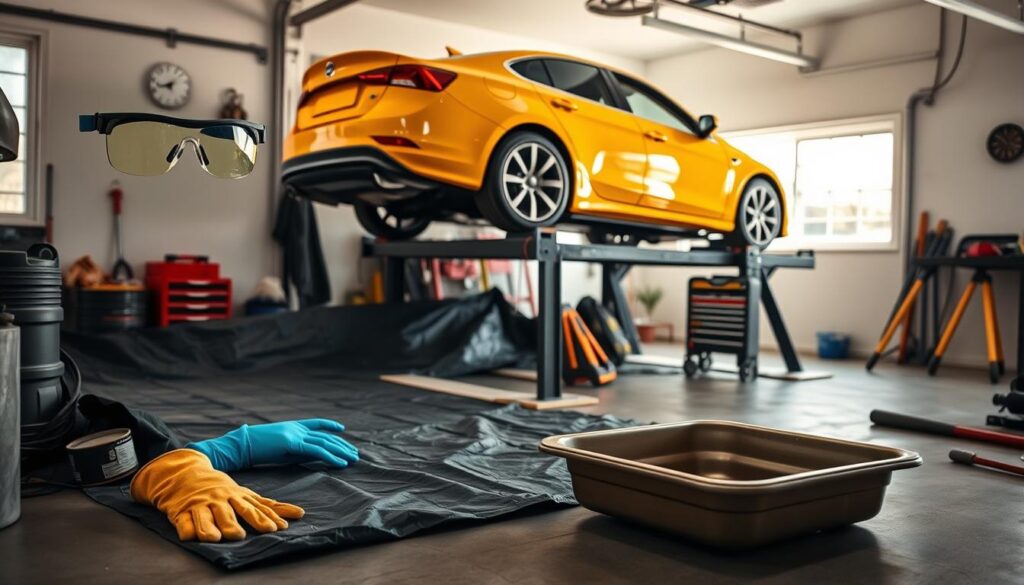
Here are some key safety precautions to follow before starting your oil change:
- Check your car’s manual for specific instructions and guidelines
- Wear protective gear, including gloves and eyewear
- Ensure the area is well-ventilated and clear of flammable materials
- Use jack stands and ramps to support the car, if necessary
By following these safety precautions, you can reduce the risks of a DIY oil change. This ensures a successful and stress-free experience. Always put your safety and the safety of others first when working on your vehicle. If you’re unsure about any part of the process, consider getting help from a professional, even for car maintenance and DIY oil changes.
| Safety Precaution | Importance |
|---|---|
| Wearing protective gear | High |
| Ensuring a well-ventilated area | High |
| Using jack stands and ramps | Medium |
Step-by-Step Oil Change Process Made Simple
Changing your car’s oil is easy with the right tools and knowledge. Find a good spot to drain the oil, like a garage or a well-ventilated area. Following oil change tips can help you avoid mistakes and do a successful DIY oil change.
Here are the basic steps for a DIY oil change:
- Drain the old oil: Find the oil drain plug and use a socket wrench to loosen and remove it. Let the oil drain completely before moving on.
- Replace the oil filter: Use a filter wrench to take out the old oil filter and throw it away. Put a new oil filter on by hand tightening it in a clockwise direction.
- Add new oil: Check your car’s owner’s manual to find out the right type and amount of oil. Pour in the new oil and put the oil cap back on.
By following these steps and using the right materials, you can do a DIY oil change and save money. Always check your car’s owner’s manual for specific instructions. For more oil change tips and DIY oil change info, talk to a professional mechanic or a reliable online source.
With these simple steps and the right tools, you can keep your car running well and make it last longer. Regular oil changes are key to keeping your car healthy. Doing it yourself can be rewarding and save you money.
| Oil Change Step | Tools Needed | Important Tips |
|---|---|---|
| Drain old oil | Socket wrench, drain pan | Make sure the car is on a level surface |
| Replace oil filter | Filter wrench | Hand tighten the new filter |
| Add new oil | Oil filler cap, new oil | Refer to the owner’s manual for the correct type and amount |
How to Properly Dispose of Used Motor Oil
Proper disposal of used motor oil is key in car maintenance to protect the environment. Used motor oil can harm soil and water if not disposed of right. As a car owner, it’s important to handle and dispose of used motor oil in an eco-friendly way.
Many people focus on changing the oil but forget about disposal. Improper disposal can pollute water and soil. To avoid this, take used motor oil to a recycling center or an authorized service station.
Environmental Considerations
Used motor oil has harmful chemicals like lead, cadmium, and chromium. These can be toxic to humans and wildlife. Proper disposal helps prevent environmental pollution and protects public health.
Local Recycling Options
To find a recycling center or service station, check with your local government or search online. Many service stations and oil change shops collect used oil. This makes it easy to dispose of used motor oil responsibly.
By following proper disposal procedures, car owners can protect the environment. Taking used motor oil to a recycling center or service station is essential. It helps reduce waste and pollution.
Common Oil Change Mistakes to Avoid
Doing a DIY oil change can lead to engine damage if you make mistakes. It’s key to follow oil change tips and guidelines carefully. One big mistake is over-tightening the oil filter. This can damage the threads and cause leaks.
Another error is using the wrong oil for your car. Always check your owner’s manual for the right oil type and viscosity. The wrong oil can hurt your engine’s performance, lower fuel efficiency, and increase emissions.
Here are some common oil change mistakes to avoid:
- Not properly disposing of used motor oil
- Not tightening the oil drain plug enough
- Not using a new oil filter
By following these oil change tips and avoiding common mistakes, you can ensure a successful DIY oil change. This keeps your engine running smoothly. Always check your owner’s manual for specific instructions and guidelines for your vehicle.
Post-Oil Change Checks and Maintenance
After an oil change, it’s key to do post-oil change checks and maintenance. This ensures your car runs well and lasts longer. Regular car maintenance can prevent expensive repairs later on. Checking for leaks is a critical step in this process.
To spot leaks, look for oil droplets or stains under your car. You can also use a pressure test to find leaks. Also, keep an eye on the oil levels to avoid engine damage and keep your car in top shape.
Here are some oil change tips to remember:
- Check the oil filter for damage or wear
- Look for oil leaks around the oil drain plug and filter
- Regularly check the oil level to keep it at the right level
By following these steps and tips, you can keep your car running smoothly. Always check your car’s owner’s manual for specific car maintenance advice. Regular care can save you money and keep your car in good condition.
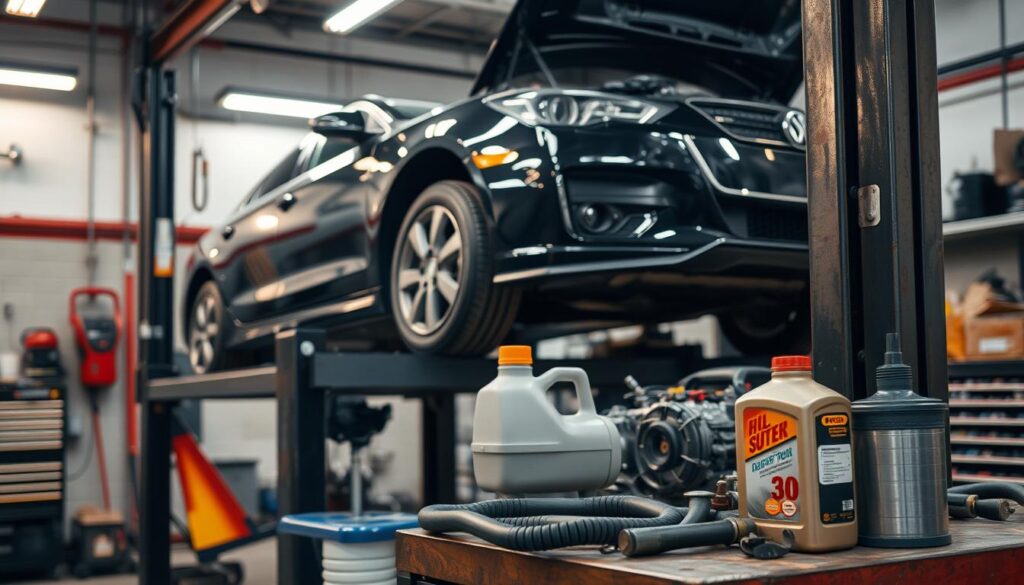
Following oil change tips and car maintenance can prevent expensive repairs. These simple steps help your car last longer and run better.
| Maintenance Task | Frequency |
|---|---|
| Oil Change | Every 5,000 to 7,500 miles |
| Tire Rotation | Every 6,000 to 8,000 miles |
| Brake Pad Replacement | Every 30,000 to 50,000 miles |
When to Schedule Your Next Oil Change
Regular oil change is key for your car’s health and performance. To figure out when to get your next oil change, look at the mileage and time guidelines. Most cars need an oil change every 5,000 to 7,500 miles, based on the car and how you drive.
Also, think about how long it’s been after your last oil change. Oil changes are usually needed every 6 to 12 months, even if you haven’t hit the mileage mark. Things like where you drive, the weather, and how old your car is can change when you need an oil change.
Mileage Guidelines
- Check your vehicle’s owner’s manual for specific mileage recommendations
- Consider the average mileage driven per year to determine the best schedule
- Adjust the schedule based on extreme driving conditions, such as frequent stop-and-go traffic or towing
Time-Based Recommendations
Regular oil changes prevent engine damage and keep your car running well. By following the mileage and time guidelines, you make sure your car gets the oil change and car maintenance it needs. This keeps your vehicle in top shape.
Professional Oil Change vs. DIY: Making the Right Choice
Choosing between a professional oil change and doing it yourself can be tough. Think about the good and bad of each choice. Doing it yourself can save money and keep your car running well, with the right oil change tips.
Here are some key factors to consider:
- Cost: DIY oil changes are generally less expensive than professional oil changes.
- Convenience: Professional oil changes can be more convenient, as you don’t have to worry about disposing of the used oil or purchasing the necessary materials.
- Expertise: Professional mechanics have the training and experience to perform oil changes quickly and efficiently.
A DIY oil change can save you money and teach you about your car. But, if you’re not sure about it or lack the tools, a pro might be better. It’s all about what you prefer and what’s important to you.
To help you decide, here’s a comparison table:
| Option | Cost | Convenience | Expertise |
|---|---|---|---|
| DIY Oil Change | Lower | Less | Variable |
| Professional Oil Change | Higher | More | High |
Think about these points and weigh the good and bad. This will help you choose the best for your car and wallet. Always follow oil change tips and safety rules, no matter if you do it yourself or go to a mechanic.
Conclusion: Mastering the 30-Minute Oil Change
Regular oil changes are key to keeping your car in top shape. Just 30 minutes of your time can save you money and make your car last longer. It’s a simple step that makes a big difference.
This guide has given you the tools to change your oil like a pro. Remember, taking care of your car’s oil is essential. Always check the levels and change the oil when needed.
Now you can take pride in your car care skills. Start saving time and money by doing your own oil changes. Your car will thank you, running smoothly for years to come.

